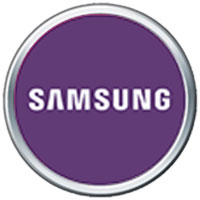
Common iPad Problems and Their Solutions
The iPad is a versatile and powerful device, widely used for work, entertainment, and communication. However, like any electronic device, it can encounter issues that disrupt its performance. This article explores the most common iPad problems and provides practical solutions to address them, ensuring users can maintain optimal functionality. Each issue is described with clear steps to resolve it, empowering users to troubleshoot effectively.
1. iPad Won’t Turn On
A common issue is an iPad that refuses to power on, which can stem from a drained battery, software glitches, or hardware faults.
Solution
- Check the Battery: Connect the iPad to a charger using an Apple-certified cable and adapter. Let it charge for at least 20 minutes before attempting to turn it on.
- Perform a Hard Reset: Press and hold the Power button (or Power + Volume button on newer models) for 20 seconds until the Apple logo appears. For older models with a Home button, hold both the Power and Home buttons.
- Inspect for Hardware Issues: If the device remains unresponsive, check for physical damage or liquid exposure. Contact Apple Support or visit an authorized service provider for diagnostics.
"A hard reset is often the quickest fix for an unresponsive iPad, resolving minor software glitches without data loss." – Tech Support Specialist
2. Slow Performance or Freezing
An iPad may lag or freeze, particularly during multitasking or when storage is nearly full, affecting user experience.
Solution
- Close Background Apps: Double-tap the Home button (or swipe up from the bottom on newer models) to view open apps, then swipe them away to close.
- Free Up Storage: Go to Settings > General > iPad Storage and delete unused apps, large files, or old messages to free up space.
- Update iPadOS: Navigate to Settings > General > Software Update to install the latest iPadOS version, which often includes performance improvements.
- Reset All Settings: If the issue persists, go to Settings > General > Transfer or Reset iPad > Reset > Reset All Settings. Note that this resets preferences but does not erase data.
"Keeping your iPad’s software updated can prevent many performance issues and enhance security." – Apple Certified Technician
3. Wi-Fi Connectivity Issues
Wi-Fi problems, such as slow connections or frequent disconnections, can hinder online activities like streaming or browsing.
Solution
- Restart Devices: Power off the iPad and router, wait 30 seconds, then turn them back on.
- Forget and Reconnect to Network: Go to Settings > Wi-Fi, tap the network name, select Forget This Network, then reconnect by entering the password.
- Reset Network Settings: Navigate to Settings > General > Transfer or Reset iPad > Reset > Reset Network Settings. This clears all Wi-Fi and Bluetooth settings, requiring reconfiguration.
- Check Router Settings: Ensure the router’s firmware is updated and that the iPad is within signal range. Contact your internet provider if issues persist.
"Resetting network settings is a powerful fix for persistent Wi-Fi issues, but remember to note down your passwords first." – Network Specialist
4. Apps Crashing Unexpectedly
Apps that crash or close abruptly can disrupt tasks, often due to software bugs or compatibility issues.
Solution
- Update Apps: Open the App Store, tap your profile icon, and update all apps to their latest versions.
- Reinstall the App: Long-press the app icon, select Remove App > Delete App, then reinstall it from the App Store.
- Check Compatibility: Ensure the app is compatible with your iPad’s iPadOS version by checking the App Store’s requirements.
- Update iPadOS: Install the latest iPadOS version via Settings > General > Software Update to resolve system-level bugs.
"Regular app updates can eliminate crashes caused by outdated software or compatibility issues." – Mobile App Developer
5. Battery Draining Quickly
Rapid battery drain is a frequent complaint, often caused by background processes, high screen brightness, or battery wear.
Solution
- Adjust Screen Brightness: Go to Settings > Display & Brightness and lower brightness or enable Auto-Brightness.
- Disable Background App Refresh: Navigate to Settings > General > Background App Refresh and turn it off for non-essential apps.
- Check Battery Health: For newer iPads, go to Settings > Battery > Battery Health & Charging to assess battery condition. If capacity is below 80%, consider a battery replacement at an Apple service center.
- Enable Low Power Mode: Activate via Settings > Battery > Low Power Mode to reduce power consumption during heavy use.
"Low Power Mode can extend your iPad’s battery life significantly during critical moments." – Device Management Expert
Addressing these common iPad problems promptly can restore the device’s performance and enhance user satisfaction. For persistent issues or complex hardware faults, consulting Apple Support or visiting an authorized service provider is recommended. Regular maintenance, such as updating software and managing storage, can prevent many of these problems, ensuring a seamless iPad experience.




